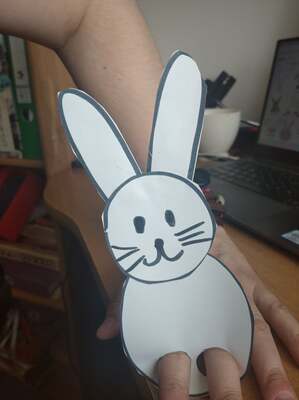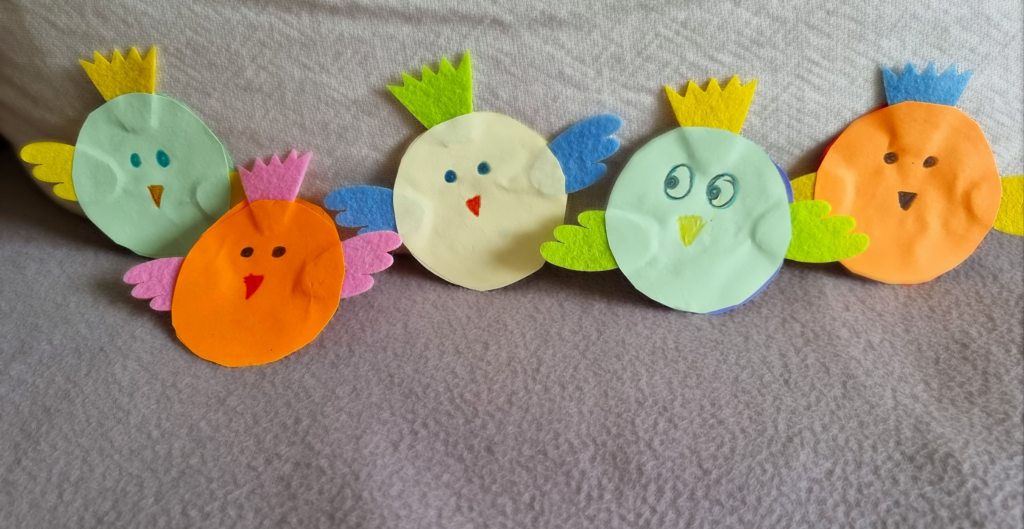
I went into this lesson on my toes, slowly, cautiously, almost unwillingly. On the one hand, I was curious, as with all the Art project. On the other hand, I was just not so convinced. On the one hand, there was a new group of kids, I did not know their levels and we were supposed to try doing online what we did face-to-face before. On the other hand, I started to look for all the Miró animals and, randomly, I typed in ‘Miró and a toucan’ and found just that. And it made me burst into laughter, just because it there was an occasion when Joan Miró held a hornbill (aka almost a toucan). I knew I would do it all anyway, even if only to find out whether I can, but I was a bit anxious.

The Before
- Introduction of colours, a variety of songs, wordwall games and Miro games
- Working on building the routine and getting used to the online format
- Introduce the artist of the day and his arts. We focused only on the animals and on the colours. We ‘visited’ our MiroBoard Gallery and we tried to guess the animals and match Miro with photographs
- We started to sing ‘Walking in the Jungle‘
- And, finally, we tell and listen to ‘Elmer’ for the first time (I have actually only used the video, muted, and I told the story myself. We also included some gestures to involve the kids).
It is necessary to add that this year, due to the fact that we meet online with my Art Explorers, our classes have a slightly different format and we work on two-lesson basis. In lesson A we introduce the vocabulary and the artist, in lesson B: we revise and focus on craft and creation. The activities mentioned above were also executed over a period of two lessons.

The While
- Get all the materials ready (a glue stick, a marker, a piece of white A4 paper, some coloured paper or pieces of colourful pages of newspapers and journals), send the list to parents ahead of time
- Check that everyone has everything (‘Show me your paper’, ‘Show me your glue’ etc)
- Show the kids your coloured paper, call out the colours.
- Ask the kids to show you theirs, call out the colours.
- Show the kids how you tear off a strip of each colour, show them a ready bunch. Wait for them to get theirs ready.
- Draw the elephant step by step. Start with the body, then the legs, the tail, the head, the trunk and the ear (by the way, the full shape of an ear is here only to help the kids visualise the elephant, a part of it will be covered by the coloured paper). Show each step to the camera and let the kids copy. Ask them to show you the paper after they have finished each step. Put the marker away.
- Open the glue, spread the glue all over the elephant, evenly, while holding the paper to the camera. Close the glue and put it away.
- Tear off a piece of one of your colourful stripes, glue it on the elephant, and then a few more. Invite the kids to do the same (‘Now you’). After a while ask them to show you their copies or ask what colour they are using, only to check how they are doing.
- Continue until the elephant is ready.
- Take the marker again and draw the eye, a small black circle. This way the creation will be easier perceived as an elephant.
- Put up your elephant for the kids to see. Ask them to show you theirs.


The After
- Introduce your elephant and describe it: ‘This is my elephant. He is green, blue, yellow and black’.
- Ask the kids to do the same.
- Watch Elmer, the video again, and, as before, pause and re-enact it with your elephants.
- We finished with singing ‘Walking in the jungle’, with our elephants, too.
Comments
I am really happy with how the activity went. Initially, I was worried that preparing the elephant will be too difficult for my kids (but they all could follow me in drawing the elephant, step-by-step, with pauses and modelling) and that preparing the patchwork will be very time-consuming but the magic happened here, too as the kids quickly realised that they were in charge of managing how big the pieces of our ‘patches’ were. The older ones were more dilligent and more accurate with the smaller pieces whereas the younger ones opted for bigger pieces and we all finished at the same time. The patchwork part took about 5 minutes. Only one of my students needed more time (as she does every time) and for that reason we started to watch the story without her elephant to give her a little bit more time. She was watching while finishing and she introduced her elephant and it worked very well.
Overall, the amount of language produced was not quite on the amazing side but this was only our third lesson of the course and I am happy. Last but definitely not least, my kids were happy and very proud of themselves and their patchwork, Miró elephants. There is definitely more to come.
Happy teaching!



















